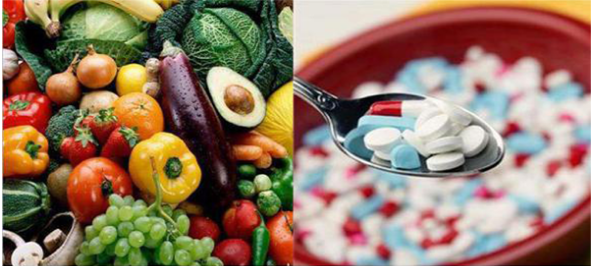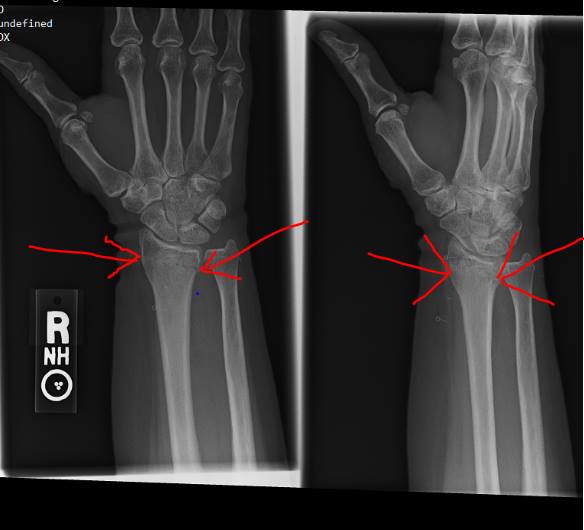
Antibiotics: Pharma vs Natural Remedies
BEYOND ANTIBIOTICS
by Dr. Lawrence Wilson
© February 2019, LD Wilson Consultants, Inc.
All information in this article is solely the opinion of the author and is for educational purposes only. It is not for the diagnosis, treatment, prescription or cure of any disease or health condition.
I. INTRODUCTION
The intent of this article is not to suggest that antibiotics should never be used. They can be life-saving. However, many doctors know and are starting to admit that antibiotics are overprescribed. They are also one of the most toxic classes of drugs.
They cause many subtle problems that are worse than the original condition. Let us examine antibiotics more carefully in light of recent findings.
We find that antibiotic drugs are rarely needed if one knows how to use natural remedies for infections. We also find that antibiotics are often quite toxic and harmful for development due to their toxicity.
Beyond Antibiotics is the title of a book by two medical doctors, Keith Sehnert, MD and Lendon Smith, MD. These gutsy authors challenge one of the most sacred methods of conventional medicine – the widespread use of antibiotics. We have drawn information from the book to write this article.
The worst. Among the most toxic antibiotics are those that contain fluoride. These include:
| Ciprofloxacin (Cipro) | Levofloxacin (Levaquin) |
| Gemifloxacin (Factive) | Moxifloxacin (Avelox) |
| Norfloxacin (Noroxin) | Ofloxacin (Floxin) |
We suggest avoiding these, except as a last resort if all else fails. Natural products will usually work just as well without the risk of adverse effects that include nervous system damage, kidney failure, and death.
OVERPRESCRIPTION
Doctors prescribe antibiotics at what can only be termed an incredible rate. According to several studies done around the year 2000, obstetricians and gynecologists wrote 2,645,000 antibiotic prescriptions every week. Internists prescribed 1,416,000 per week. This works out to 211,172,000 prescriptions annually, just for these two specialties! Pediatricians prescribe over $500 million worth of antibiotics annually just for one condition, ear infections.
If this sounds like a lot of prescriptions, the next statistic should also give you pause. The above only represents 20% of all antibiotic usage. 80% of antibiotics are given to livestock animals – whose meat and dairy products we then eat.
This means most everyone is taking a little antibiotics, whether or not one swallows pills or takes shots of them. This can also help one understand why antibiotic-resistant bacteria is a serious and growing problem.
II. PROBLEMS WITH ANTIBIOTICS
The list of problems with antibiotics is quite long. Some are common and well known. Others are subtle, but no less important. I have divided the adverse effects into nine categories:
1) They contribute to cancer. A 2008 study of 3,000,000 people divided the participants into groups that had taken no antibiotics for the past two years, those that had taken 2-5 prescriptions and those that had taken six or more prescriptions in the same time period. Participants were tracked for six years afterwards.
Those who had taken 2-5 antibiotic prescriptions had a 27% increase in cancers compared to those who took none. Those who took six or more prescriptions had a 37% increase in cancers. This was a carefully done study on a large group of people and published in a very reputable journal (Int J Cancer 08;123:2152-2155).
Other studies show the same thing. A National Cancer Institute study in a major medical journal found that the incidence of breast cancer doubled among women who took more than 25 antibiotic prescriptions or took antibiotics for more than 500 days over 17 years (JAMA 04;291:827-835).
2. Allergic Reactions. When the author was in medical school, his professors explained that rarely a patient would have a fatal allergic reaction to it. We were taught that if one practiced medicine long enough, someone would die in our office after a shot of penicillin.
While this is uncommon, other allergic reactions to antibiotics occur frequently. Not only can antibiotics cause reactions, but most antibiotics contain chemical colors, sugar and other additives that can trigger a reaction in sensitive individuals.
3. Destruction Of Beneficial Bowel Flora. Like pesticides, antibiotics kill good bugs along with the bad ones. Wide-spectrum antibiotics are notorious for this. The human intestine has a somewhat delicate ecology in which certain bugs help digest food, produce certain vitamins, and maintain a balance of organisms that prevents harmful bacteria and yeasts from multiplying.
Wide-spectrum antibiotics derange the normal ecology of the intestine. This can cause parasitic infection, vitamin deficiencies, loss of minerals through diarrhea, inflammation of the gut, malabsorption syndromes and development of food allergies due to defects in intestinal function.
4. Development Of Resistant Species Of Micro-organisms. An article in Science Magazine, August 1992, stated, “Doctors in hospitals and clinics around the world are losing the battle against an onslaught of new drug-resistant bacterial infections including staph, pneumonia, strep, tuberculosis, dysentery and other diseases that are costly and difficult, if not impossible, to treat”.
Bacteria have a certain ability to mutate. Antibiotics kill bacteria that are susceptible to their action, but this leaves the field open for mutant strains to multiply even more. It is a case of survival of the fittest. The use of antibiotics actually encourages the development of the mutant, drug-resistant super-bacteria.
5. Immune suppression. This may sound odd because the purpose of antibiotics is presumably to help the immune response. However, evidence indicates that people treated with antibiotics have more repeat infections than those who are not given them.
This is especially true of children whose ear infections are treated with antibiotics. Vitamin A and C, and the use of simple herbs such as echinacea and astragalus, for example, are much safer and often equally effective.
In fact, antibiotics do not aid the immune system. They replace one of its functions. Antibiotics act by inhibiting certain enzymatic processes of bacteria, and by changing mineral balances. Normal cells, however, are also affected. This may be one reason why antibiotics weaken the immune response. Other toxic effects of antibiotics, such as the effect upon the normal bowel flora, may also be a cause.
AIDS research indicates that a risk factor for AIDS is an impaired immune response. This can be due to a history of repeated antibiotic use. Perhaps it is no accident that the same group of people with the highest incidence of AIDS – homosexuals – is also a group that uses more antibiotics than most other groups of people. This may also be why antibiotics are linked to increased risk of cancer.
6. Overgrowth of Candida Albicans And Other More Dangerous Intestinal Infections. Normally, candida albicans, a common yeast, lives peacefully in our intestines and elsewhere, in harmony with other flora that keep the yeast in check. Take an antibiotic and all of this changes. By suppressing the normal flora, candida takes over and problems begin. In its mild form the result is diarrhea or a yeast infection.
Far more serious is the growing problem of chronic muco-cutaneous yeast infection. This is described in books such as The Yeast Connection and The Yeast Syndrome. It is a major iatrogenic (doctor-caused) illness today, and a very debilitating and potentially fatal condition. One of the prime risk factors for chronic candida infection is repeated antibiotic use.
Even more dangerous is that antibiotic use opens the intestines to infection by other species of disease-causing bugs. These range from parasites and yeasts to others that can cause damage to the intestinal lining and other areas of the body.
7. Chronic fatigue syndrome. This is another ‘new’ health plague. It is associated with chronic viral illness and a weakened immune system. While its exact origins are not clear, one of the major risk factors for chronic fatigue syndrome is – you guessed it – repeated antibiotic use.
8. Nutrient loss and resulting nutritional deficiency states. Nutrient loss from antibiotics is due in part to diarrhea, which causes a loss of essential minerals. Destruction of friendly bacteria in the intestines can also impair the synthesis of certain vitamins in the intestines. While not a major cause of malnutrition, antibiotic usage can definitely be a factor in common nutritional deficiency states.
9. Serious kidney and liver damage. Antibiotic drugs do not all leave the body a few hours after taking a dose of them. In fact, a residue remains for years. It often accumulates in the liver or kidneys. There it can cause serious damage to these organs.
10. Treating effects, not causes. Antibiotics only address the end-stage result of a weakened body chemistry – bacterial invasion. The bacteria may only be there to “mop up” the biological debris that are present because the body is too weak to eliminate the poisons.
In fact, the infectious process can serve a useful purpose. Cutting short the process with antibiotics aborts the cleansing function of a infection, which can impair health in the long run. Of course, we don not advocate not responding to infections. However, the idea of giving antibiotics for every little infection is not helpful for overall immunity. This may be why giving antibiotics to babies and children for ear infections has been shown to increase the frequency of future infections.
This line of reasoning traces back to the famous debate between Pasteur and Beauchamp. Dr. Pasteur insisted that germs are the cause of disease. His colleague, Beauchamp, insisted that the health of the host was more important than the germs.
On his death bed, Pasteur was said to have declared that Beauchamp was correct – “the host is everything, the germs are nothing”. Orthodox medicine, however, embraced Pasteur’s view, and ignored Beauchamp. It is time to focus more on the person, and less on the germs.
11. High Cost. While the cost of a single antibiotic prescription may not be extremely high, some newer antibiotics are quite expensive. These are used more frequently today due bacterial resistance to the older antibiotics. These Millions of doctor visits and prescriptions for antibiotics add up to a major expense.
We must also include in the cost of antibiotics the cost of allergic reactions, candida albicans infections, repeat infections, development of resistant organisms, some cases of cancer and widespread immune suppression.
The cost is justified if the antibiotic drugs are the only or best option. However, We believe this is not the case. Bringing health care costs under control is not just a matter of eliminating waste and fraud. We need methods of healing that build up the health of the people, rather than ones that poison the body with side effects.
12. Contamination of every major water supply in the United States and most in Europe. Antibiotic residues are now a major cause of water pollution throughout the world.
13. Persistence of residues in most beef, chicken, turkey and pork consumed in America and to a lesser degree in Europe. Widespread use of antibiotics in animal feeds to fatten animals, and giving antibiotics to sick animals is causing residues to show up in a lot of meat and dairy products, particularly in America and Europe. This leads to bacterial resistance to antibiotics and weakens the bodies of those who eat the animal products.
III. MYTHS ABOUT ANTIBIOTICS
Among the prevalent myths about antibiotics are the following:
Myth #1. Natural remedies may be nice, but if you are really sick with an infection, you need antibiotics. This is a total falsehood, in our experience. First, antibiotics are ineffective against viral and some bacterial infections. Secondly, in our experience of 39 years, the proper natural methods are often just as effective or more so than antibiotics.
Myth #2. Antibiotics are responsible for the decline in infectious disease. Antibiotics are helpful for some infections. However, antibiotics have not resulted in the elimination of infectious diseases.
In fact, we now have antibiotic-resistant diseases that are much more difficult to treat as a direct result of the use of antibiotics. These include strains of gonorrhea and tuberculosis, as well as many others that are less well known such as MRSA, a resistant strain of streptococcus. These cause many deaths, especially in hospitals.
In Beyond Antibiotics, the authors use graphs to trace the incidence of the major infectious diseases from 1900 to 1973. The diseases include measles, scarlet fever, tuberculosis, typhoid fever, pneumonia, influenza, whooping cough, diphtheria and polio.
All were in decline for several decades before the introduction of antibiotics or vaccines. After reviewing the data, researchers John McKinlay and Sonja McKinlay at Boston University concluded that “.. at most, 3.5% of the total decline in mortality since 1900 could be ascribed to medical measures introduced for the diseases considered here”. In fact, improved nutrition, sanitation and hygiene were far more important than the ‘wonder drugs’ or vaccines to reduce these diseases.
Myth 3. Antibiotics are useful against colds, flu and ear infections. Studies show that antibiotics are not that helpful for most cases of colds, flu and ear infections. Yet many physicians continue to prescribe them for viral conditions such as colds and flu.
Their rationale is it is a way to prevent secondary bacterial infection. This would not be so bad, except for the cost and serious side effects of many antibiotics.
Given the dangers of antibiotics, it is prudent in most cases not to take antibiotics for colds, influenza and many ear infections. They can worsen the situation, prolong recovery and leave one with permanent liver, kidney and digestive problems.
Myth #4. Antibiotics are harmless. This is the most insidious myth. It leads to overprescribing and blinds physicians and the public to the dangers of antibiotics. Meanwhile, safer methods of avoiding and treating infections are ignored based upon the false premise that antibiotics will take care of everything.
The Physician’s Desk Reference lists the adverse effects of antibiotics. Anyone who is taking an antibiotic (or any other medication) should read about the adverse effects. This can help prevent nasty surprises. Also take notice of the interaction between antibiotics and other medications.
IV. OTHER TOPICS
IF ANTIBIOTICS ARE SO HARMFUL AND NOT NEEDED, WHY ARE THEY USED SO MUCH?
The reason is that medical doctors are not taught to use natural remedies for infections. Also, their State Medical Boards and even their attorneys may require that they use antibiotics or they might lose their medical license. This is the same reason why most doctors do not say a word about the problems with vaccination, another dangerous and sometimes lethal medical practice.
Most medical doctors are ignorant about the alternatives to the use of antibiotics. We find that even many naturopaths are taught that if a person is really ill, suggest an antibiotic.
INFECTIONS DURING A DEVELOPMENT PROGRAM
These are very common. Technically, they are not infections, but rather retracing or healing or purification reactions. The difference is that an infectious disease is a sign of ill health in which invading organisms sweep through a part or all of the body causing damage and possibly causing death.
In contrast, a healing reaction is a sign of improved health. The body reopens the fight against an old, chronic infection by making it acute and then eliminating it for good. Symptoms will often occur for a few days or occasionally longer as the body ‘mops up’ the chronic condition.
However, a healing reaction can look and feel exactly like a cold, a flu, a sinus infection, a throat infection or another infection. For details, read Retracing.
REDUCING THE NEED FOR ANTIBIOTICS
There is much you can do to both prevent and get rid of infections without using antibiotics. This is discussed in a separate article entitled Boosting Your Immunity.
OTHER IMPORTANT HINTS FOR FIGHTING INFECTIONS
· Use the safe natural remedies described at the link above aggressively and faithfully. This is a very important point. Do not skimp on the dosages of vitamins and herbs, for example. Taking a little more will not usually hurt you, but taking less may make them less effective.
· Patience and persistence are essential with any serious infection. Healing some infections with natural methods may take a week or longer. This is perfectly fine, provided you are slowly getting better. It is not helpful to abandon the natural methods just because healing takes a week or longer. Using antibiotic drugs may speed up the process, but leave you weakened and toxic.
· Always act quickly with all infections, even a cold. Many people who do not want to take antibiotics, but they also fail to apply natural remedies quickly or at all. This is not wise because any infection can be dangerous for one’s life.
· Start natural therapy at the first sign of infection. This will increase its effectiveness and prevent complications that occur due to waiting. Waiting with infections is almost always a bad idea, as it can allow the infection to take hold more firmly in the body.You never know when complications will set in quickly and be life-threatening.
· If one method is not working at all after a few days, add another one or two. However, remember that, at times, results are slow because it is a serious infection and not because your methods are not working.
· You may combine all the natural methods, and you may use them along with antibiotics or other medication if you wish, unless told otherwise. Natural methods of healing do not, to my knowledge, interfere with antibiotics and, in fact, will make them more effective by replacing nutrients in the body.
· If you are not succeeding within a few days to at least feel a little bit better each day, always consult a knowledgeable health practitioner. Rarely, an infection will require medical intervention.
Sinus infections. Many are fungal in origin and will not respond to antibiotics for this reason. Antibiotics are actually fungal-based drugs and can make them worse.
If a sinus infection responds slowly, it may be fungal in origin. These respond very fast with the use of two unusual-sounding methods:
1. A single red infrared heat lamp (250-watt bulb sold at Home Depot or other hardware store) shined on the sinuses for 5 minutes every hour is superb.
2. Colloidal silver can also be sniffed or inhaled into the sinuses with excellent results. Do this several times per day. It should also be used orally.
Toothaches. Always visit a dentist. However, on a nutritional balancing program, tooth flare-ups occur commonly and usually go away on their own. You may shine a single red heat lamp on the jaw near the tooth 5-8 times daily for 5 minutes each time, as hot as you can stand it. Also, you can place a tablespoon of colloidal silver in the mouth and tilt the head so the solution covers the affected area, and these methods can help in a pinch. Always consult a knowledgeable person if you are not sure what to do.
CONCLUSION
Antibiotics are a class of medications that can save lives. However, antibiotics are extremely overprescribed and most are quite toxic. They should be used as a last resort, not the first. Very often, simple, inexpensive natural methods of healing infections work well, with far fewer adverse effects.
Most doctors don’t know about natural alternatives, including some naturopaths and holistic doctors, so they prescribe antibiotics and often overprescribe them for conditions that they do not act upon.
Infections are always serious conditions, even seemingly mild ones. Therefore, take care of all infections rapidly, and aggressively. Natural remedies often work superbly. Finally, always ask for help if you are not sure how to use simple, natural methods or if an infection is not beginning to get a little better, at least, after two or three days, at the most.






Responses